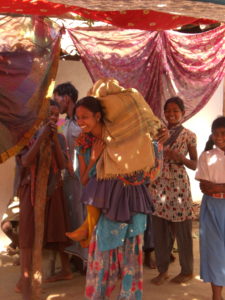Sharing an understanding of wellbeing not as something that we can ‘have’ as an individual or small group, but as something that happens, that emerges in the inter-relations between personal, societal and environmental processes.
The build up to Christmas often evokes mixed emotions. Excitement and anxiety, pleasure and obligation, anticipation and dread. Hope that this time it will all be perfect and fear that somehow it won’t be.
This year, though, the contrasts have been more than usually stark. Thousands of refugees re-live on our screens the Christmas story of a young family forced to move by an occupying power. Hands outstretched in welcome are slapped back, as doors slam and border walls erupt like long livid scars across the landscape. At home the clamour of our Christmas shuttles on, the images of warmth and sparkle wrapping the need for a sale in the treasures of our love, transformed and pre-packaged into the dreams which the market dreams for us.
While in the shadows our nightmares take monstrous forms of violence and distrust, re-shaping the old question ‘who is my neighbour?’ from ‘whom should I help?’ to ‘whom should I fear?’ As our everyday securities dissolve, our politicians make heroes of themselves with talk of war, while those who stand for peace are derided. And beneath our feet the planet simmers gently, the jungles burn and the polar bears starve.
In such a world, what is the place of wellbeing? Surely not only in the metrics of ‘satisfaction with life’ or the global rankings of nation-states by the reported happiness of their citizens. Most naturally, perhaps, it comes to rest within an ever decreasing circle, our nearest and dearest, the curtains drawn tight and the heating turned up, a place of safety against the terrors beyond our doors, Christmas music masking the cries of battle. But this is just the time when we need to reach beyond, to recognise that the wellbeing of none of us can be assured without the wellbeing of all. To develop an approach to wellbeing that can transform relations with people beyond our doors from harbingers of fear to harbingers of hope.
To get to this place means seeing wellbeing itself as belonging in relationship. Instead of rating other people against our measures of wellbeing, we need to understand what wellbeing means for them, to listen to how they describe their lives in their own words. Instead of seeing wellbeing as all about attitudes and emotion, we need to explore how the ways people think and feel about their lives are affected by the terms on which other people engage with them and whether they have enough means to meet the needs of themselves and their families.
It means recognising that wellbeing is, yes, about personal processes, what goes on within people and between them and those close to them. But that these personal processes are deeply intertwined with societal processes, the balance between wealth and poverty, social justice and inequality, market and welfare, and the making of social difference by gender, race, ethnicity, religion, age, or dis/ability. As the recent Paris climate change talks remind us, human wellbeing is fundamentally interconnected with environmental wellbeing.
This leads to an understanding of wellbeing not as something that we can ‘have’ as an individual or small group, but as something that happens, that emerges in the inter-relations between personal, societal and environmental processes.

Relational wellbeing
Picture a visual diagram showing three aspects of wellbeing: interlinked personal, societal and environmental processes. Each of these aspects has some autonomy from the others, but each is also constituted in relation to the others. The aim of sharing this understanding is to promote discussion – what are the particular processes going on in our context now? It encourages people to reflect on how their personal experience is shaped by broader social, economic and political factors, and how these in turn are shaped by and shaping environmental processes, the natural rhythms of the planet and the ecology of all its creatures. Most of all, this understanding of relational wellbeing directs attention towards understanding wellbeing in terms of connections and flows – a dynamic and complex set of inter-relations which changes over time.
Learn more
